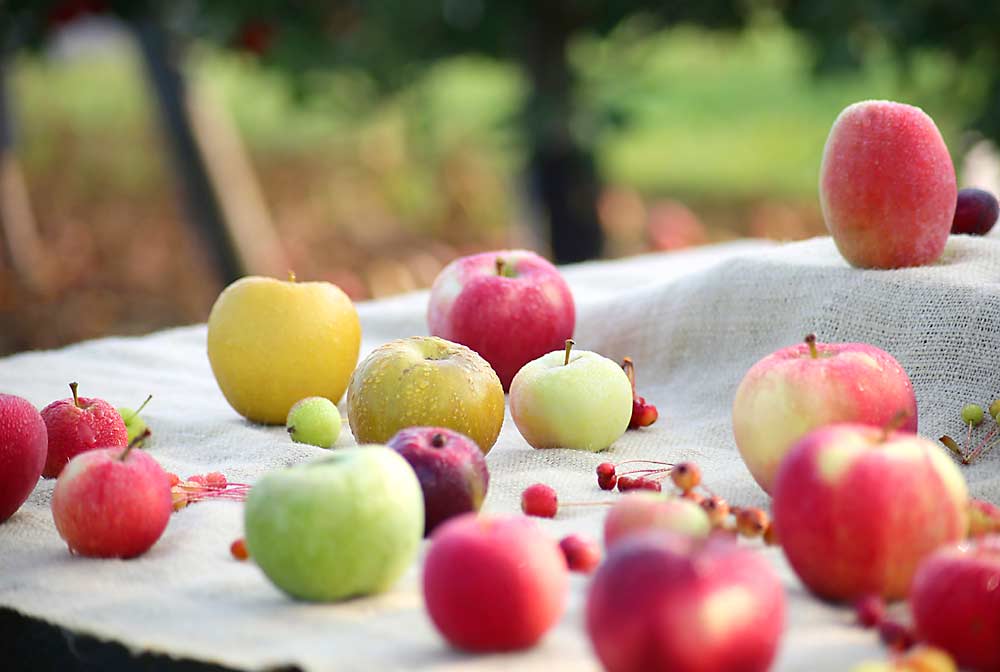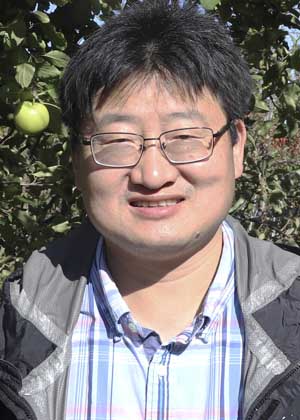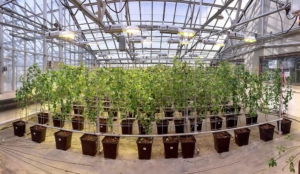
As researchers learn more about the apple’s genetic past, they create a clearer roadmap for the apple’s future.
The latest milestone was reached last November, when a team of researchers announced that they had sequenced the full reference genome for Gala, a top commercial cultivar of the domesticated apple (Malus domestica). They also sequenced genomes for the domesticated apple’s two main wild progenitors: the European crab apple (M. sylvestris) and the central Asian wild apple (M. sieversii), which together account for about 90 percent of the domesticated apple’s genome.
The team, made up of researchers from the Boyce Thompson Institute, Cornell University, the U.S. Department of Agriculture and China’s Shandong Academy of Agricultural Sciences, published its findings in the scientific journal Nature Genetics.
Sequencing the three genomes is a “significant breakthrough” for apple breeders to help them identify important traits such as flavor and disease resistance, said Gan-Yuan Zhong, the project’s co-leader and a research leader with USDA’s Agricultural Research Service.

Comparing the three genomes they assembled enabled the team to identify which progenitor species contributed the genes responsible for many key traits of the domesticated apple. They found that firmness and acidity came mainly from the European crab apple, for example, while size came from the Asian wild apple, said Zhangjun Fei, the project’s other co-leader and a professor at Boyce Thompson Institute, an independent plant research institute affiliated with Cornell University.
The new findings provide variety and rootstock breeders with a better genetic roadmap than they had before, said Gennaro Fazio, a research geneticist with USDA’s Agricultural Research Service and one of the breeders who developed the Geneva rootstock series.
“It’s like going from old MapQuest maps to Google Earth maps with pictures,” he said. “We still need more definition, but it provides a lot more granularity to the picture. We can see a bit better, a bit deeper.”
When the research was published, Fazio found it online and immediately started downloading data. He’s using that data to make comparisons and to better answer questions he’s been grappling with for years. It’s already helped him more precisely identify the genes that make apples sensitive to scald.
Zhong said the new study was the outgrowth of an earlier collaboration, published in 2017, which traced the history of apple domestication and evolution along the Silk Road, the ancient trade route between China and Europe that facilitated the spread of the domesticated apple. Zhong, Fei and other colleagues decided to build off that research and take advantage of new DNA sequencing and assembly technologies to create new and better apple reference genomes. They used fruit from USDA’s Geneva Clonal Repository, the largest collection of apple accessions in the world.
Before the 2017 collaboration, European researchers had assembled most of the Golden Delicious genome, the first work of its kind. That work was an “improvement on nothing,” but there were still big knowledge gaps, Fazio said.
“Before that, we were going around without a map,” he said. “It was the Lewis and Clark stages.”
As part of their 2020 study, Fei and Zhong’s research team identified about 50,000 genes in the pan-genome (the entire gene set of all strains of a species) of the domesticated apple, including about 2,000 that were not present in previously published reference genomes. Many of those newly identified genes are important because they could determine the traits of greatest interest to apple breeders, Fei said.
Thanks to that pan-genome work, breeders now have access to previously untapped information — things about the apple they didn’t even know existed, Fazio said.
“That will be quite powerful in the near future.” •
—by Matt Milkovich







Leave A Comment